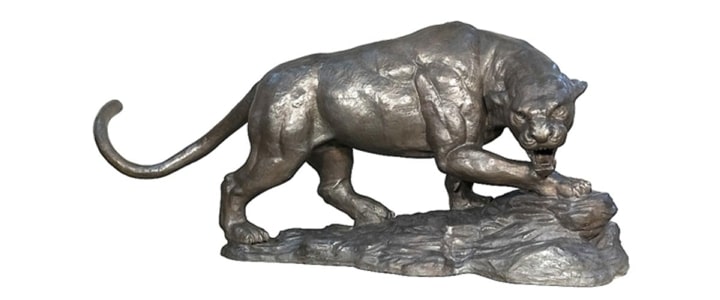The History of Big Cats
The phrase big cat generally refers to the five existing species of the genus Panthera, which include the tiger, lion, jaguar, leopard, and snow leopard, as well as the non-pantherine cheetah and cougar. All felines are descendants of the Felidae family, exhibiting similar muscle structures, cardiovascular systems, skeletal frameworks, and behaviors. Unlike other big cats, the cheetah and cougar have distinct physical characteristics and differ even more from smaller felines. As obligate carnivores, big cats are regarded as apex predators, sitting atop their ecosystems without any natural enemies. Their natural habitats span the Americas, Africa, and Asia, with the ranges of both leopards and tigers extending into Europe, .and Russia.
Evolution
Researchers suggests that the forebears of the majority of large felines diverged from the Felinae lineage roughly 6 million years ago. In contrast, the Felinae group primarily consists of small to medium-sized felines, which include domestic cats along with a few larger species like cougars and cheetahs.
The snow leopard and the tiger share a close evolutionary relationship as sister species, whereas the lion, leopard, and jaguar are more closely related to one another. The tiger developed into a distinct species towards the end of the Pliocene epoch, around 3 million years ago. The common ancestor of leopards, lions, and jaguars diverged from other big cats around 4 million years ago, and around three and a half and two and a half million years ago, the jaguar branched off from the lineage leading to lions and leopards. The split between leopards and lions occurred about 2 million years ago. The oldest known big cat fossil, Panthera dates back to between 4 and 6 million years ago, was found in southwest Tibet.
How Big Cats Roar
The capability to roar is due to a uniquely shaped and elongated larynx along with an adapted hyoid apparatus. The larynx is connected to the hyoid bone, which hangs from a series of bones. This series includes the tympanohyal, stylohyal, epihyal, and ceratohyal; these bones are situated in the skull and mandible. Within the larynx are vocal folds that provide the necessary structure to lengthen the ligament, resulting in the roaring sound. This tissue consists of thick collagen and elastic fibers that become denser near the epithelial mucosal lining. When this substantial pad folds, it produces a low fundamental frequency, leading the cartilage walls of the larynx to vibrate. As the vibration occurs, the sound transitions from high to low air resistance, creating the roar. The lion’s larynx is the most elongated, which allows it to produce the most powerful roar. Under optimal conditions, a lion’s roar can be heard up to 6 miles away. All five living species within the genus Panthera possess this elongated hyoid; however, due to variations in the larynx, the snow leopard is unable to roar. In contrast to the roaring cats in its family, the snow leopard lacks a significant pad of fibro-elastic tissue, which is necessary for a large vocal fold.
